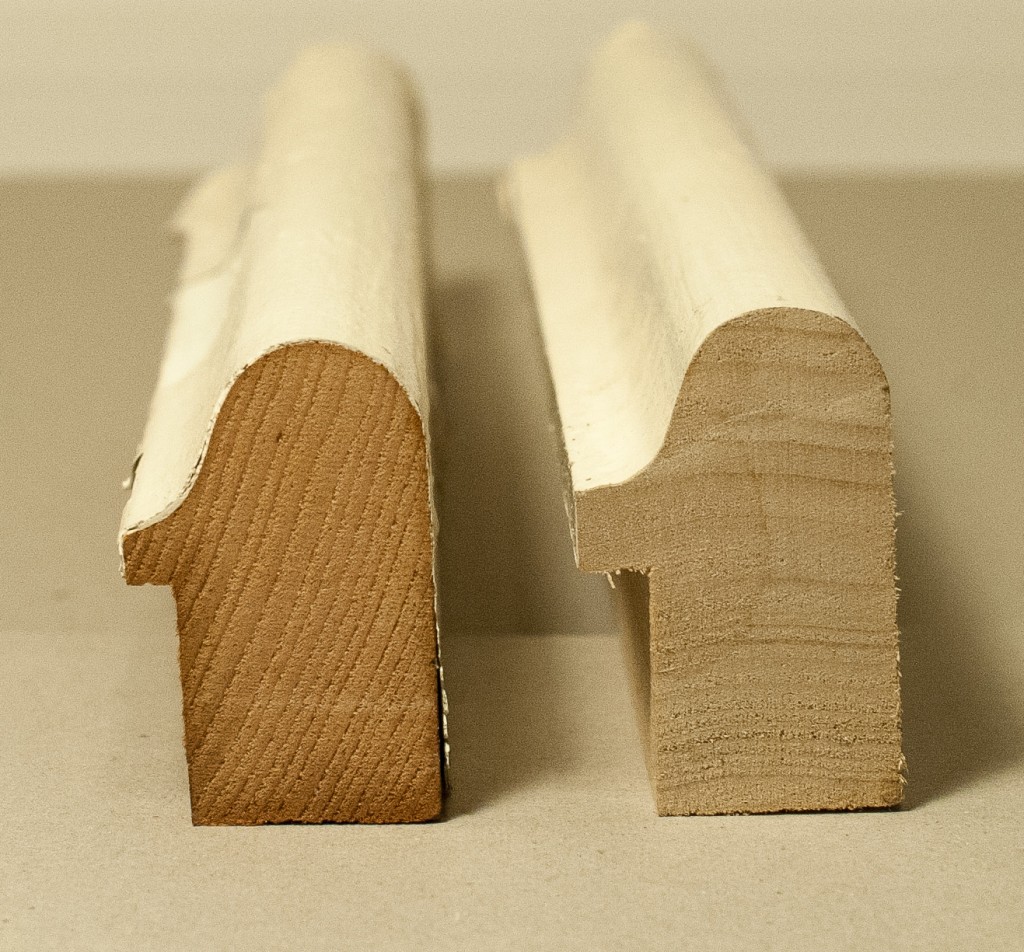Minutia
Posted on 13 September 2013

We had saved as much of the original door and window casing as we could before starting demolition. Now that we were creeping toward the final stages of the project, we had to figure out if we had enough salvaged material, or if we would need to make shaper knives to replicate some of it. Greg did the inventory, and it looked like we had enough casing, but we would be short of band molding. I asked him to bring me a sample of the band so I could get the knives made, but the piece he brought me (above on the right) didn’t look quite right. It was made of poplar, which would have been a very unusual species for mid-19th-century trim, and the poplar looked kind of new. But more than that, the molding was ugly.
I asked Greg to check if there was more than one version of trim floating around, and sure enough, he brought me another example (above left). This one looked like pine, and it seemed older, both from the oxidation of the wood and the tight grain structure. And it was graceful.
I realize that I may be on thin ice claiming that one molding profile is inherently more pleasing than another, but — relativists and political correctness be damned! — I feel strongly about this one. Not sure I’m ready to make my stand across all times and all cultures, but for those of us who’ve grown up immersed in the Greco-Roman architectural tradition, i.e., most everyone in North America and Europe, absolute judgements are sometimes warranted. Some things are objectively more beautiful than others, some curves have lift and spring, and others fall flat. I’m working hard at explicitly understanding the factors that make for grace, but for now, with apologies to Justice Stewart, I’ll just claim that I know it when I see it.
The questions remains though: why the ugly molding mixed in with the good stuff? I suspect it was installed during an earlier renovation to repair damage from a significant fire, and, to their credit, the carpenters made an effort to match the original profiles, but they didn’t quite nail it.
Perhaps no one else will notice the difference, but I like to think that staying open to seeing a beautiful curve cultivates a habit of mind that helps us execute the details that people do notice. So when a prospective client asks me why she should choose my company over the one that bid 30% less, I point to the two moldings. If they get it and choose me, great; if they don’t and choose the other guy, that probably works out alright as well.
